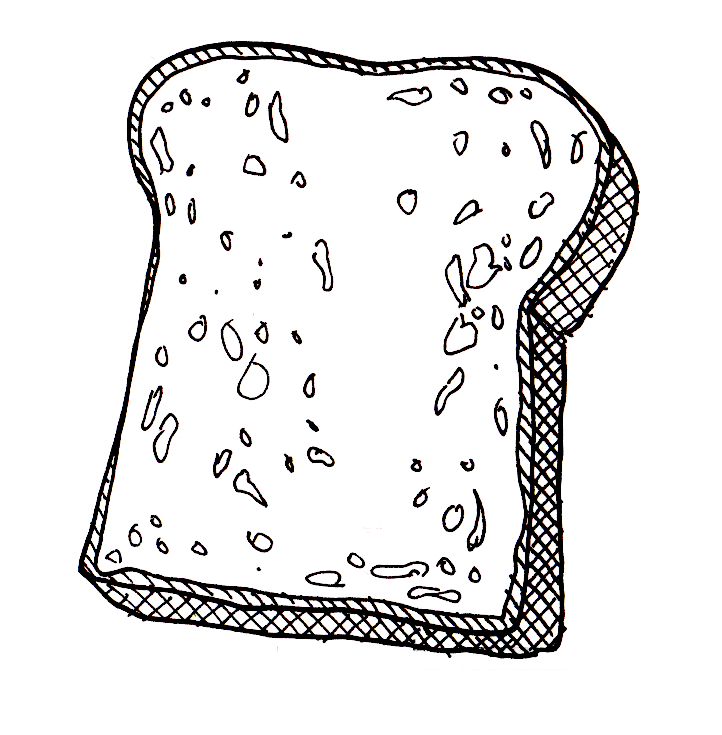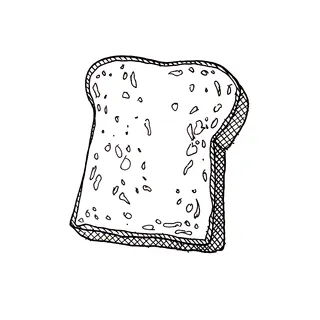Owen Simmons' The Book of Bread
A 1903 manual of baking and one of the world's first photobooks
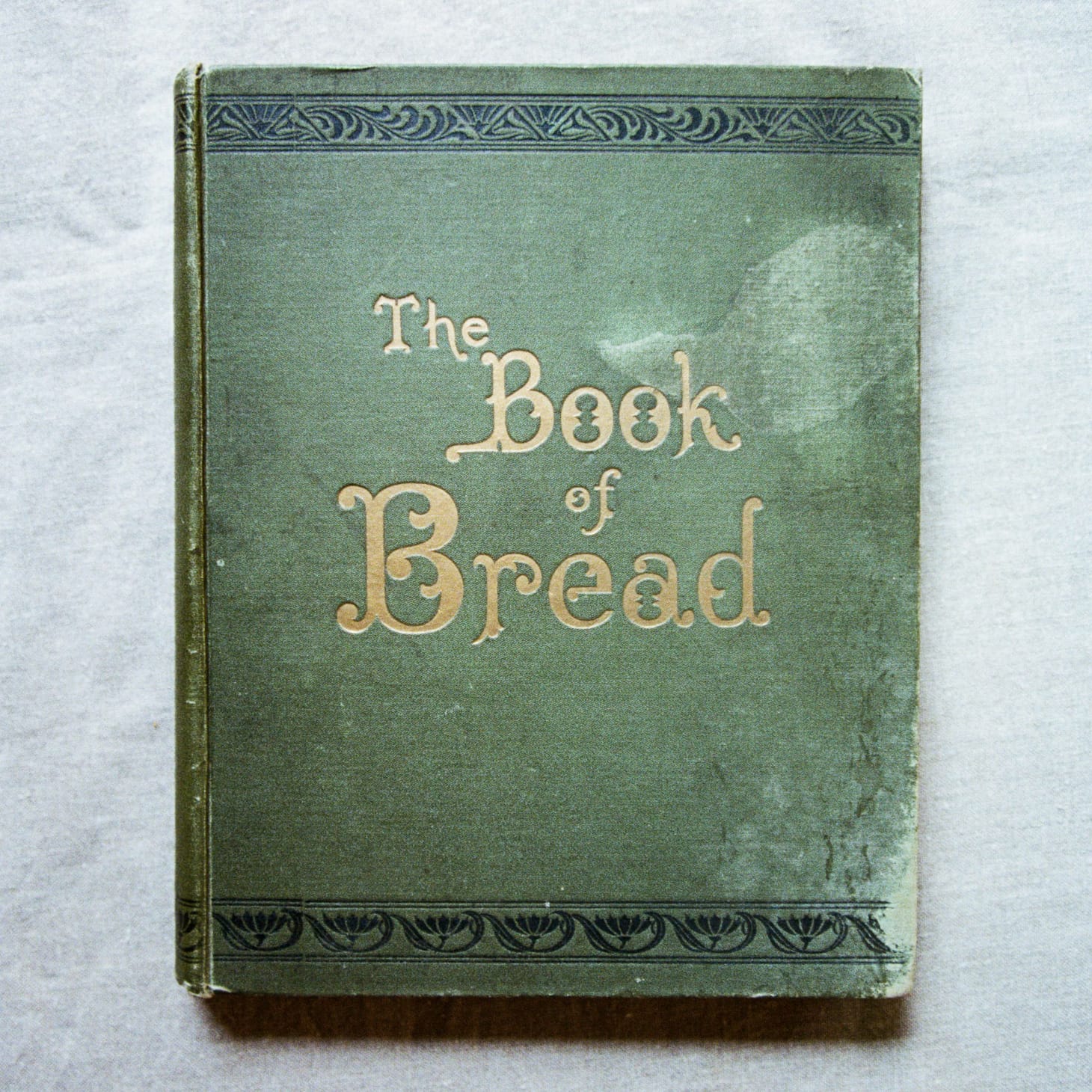
Table of Contents
This essay was originally written for Paula Forbes’ newsletter Stained Page News. I asked her if I could republish it here, and she graciously agreed. Paula’s busy with many other things these days, so updates on SPN are rare lately, but it’s still very much worth a follow.
One of my book-collecting white whales has long been Owen Simmons’ 1903 The Book of Bread (Maclaren & Sons, London). This technical manual for professional bread bakers is considered one of the earliest examples of a commercially-printed photobook. As a photographer, bread baker, and obsessive collector, The Book of Bread represents a somewhat singular object of desire for me: A rare and beautiful tome that is both cookbook and photobook.
Owen Simmons co-founded the National Bakery School in 1894 and was a writer for the baking trade journal The British Baker, from which The Book of Bread derives much of its technical information. He was also, as photographer and photo-historian Martin Parr noted in volume 1 of his 2004 history The Photobook, "a man who did not hold with false modesty.” This is abundantly clear even from the preface, in which Simmons describes the book’s contents as “fairly taken as representing, and including practically all, as seen by the index, the baker, in his ordinary avocations, would find useful or would desire to know."
Of the book’s photographs he is even more boastful: “However critical readers might be, they will be forced to admit that never before have they seen such a complete collection of prize loaves illustrated in such an excellent manner.”
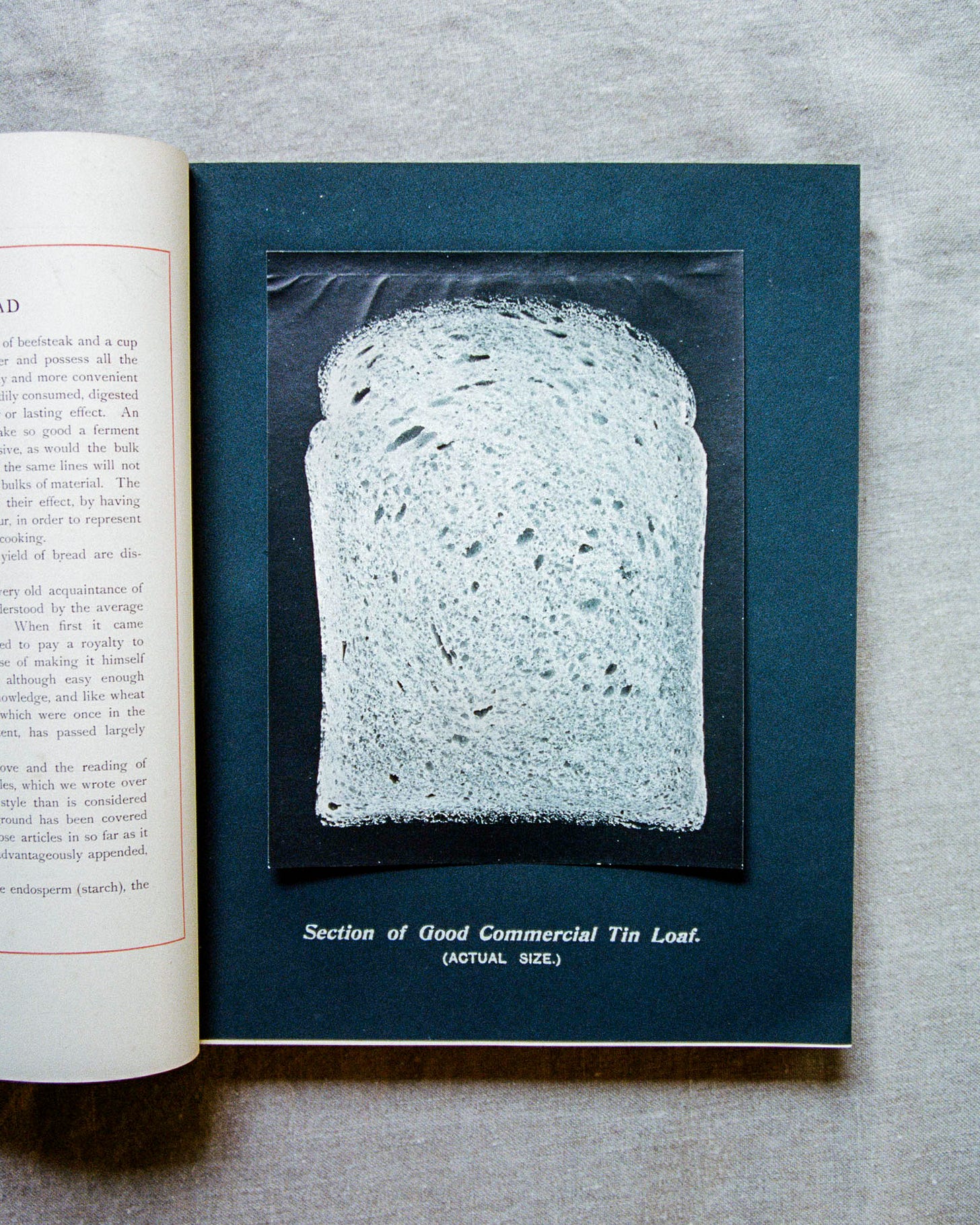
I had seen photographs of the photographs in The Book of Bread reproduced in Parr's book and online, and had perused the contents of the book thanks to the PDF version that is archived online. But I hadn't laid my hands on an actual copy until earlier this year, when I found a water-damaged specimen for sale online. Exactly how many copies of the book were originally printed is unclear, but now, nearly 120 years on, there are never more than a handful available from antiquarian booksellers, and they normally fetch many thousands of dollars each. My stained copy cost a fraction of what others do, though still far more than I have ever spent on a book before (or likely will again). The good news was that the staining is entirely confined to the covers, and the book is in otherwise very good condition, especially considering its advanced age. (All photos here are images of my copy.)

The Book of Bread contains 12 color and 27 black-and-white photographs, most of which depict cross-sections of loaves printed life-size. Eight of the BW images are tipped-in photolithographs—meaning they were printed separately using a method that converts a photographic negative into a printable lithograph—and then pasted into the book, as in the photographs above. Another two are pasted-in, handprinted silver bromide photographs—i.e., images individually printed using traditional darkroom techniques—as in the image below.
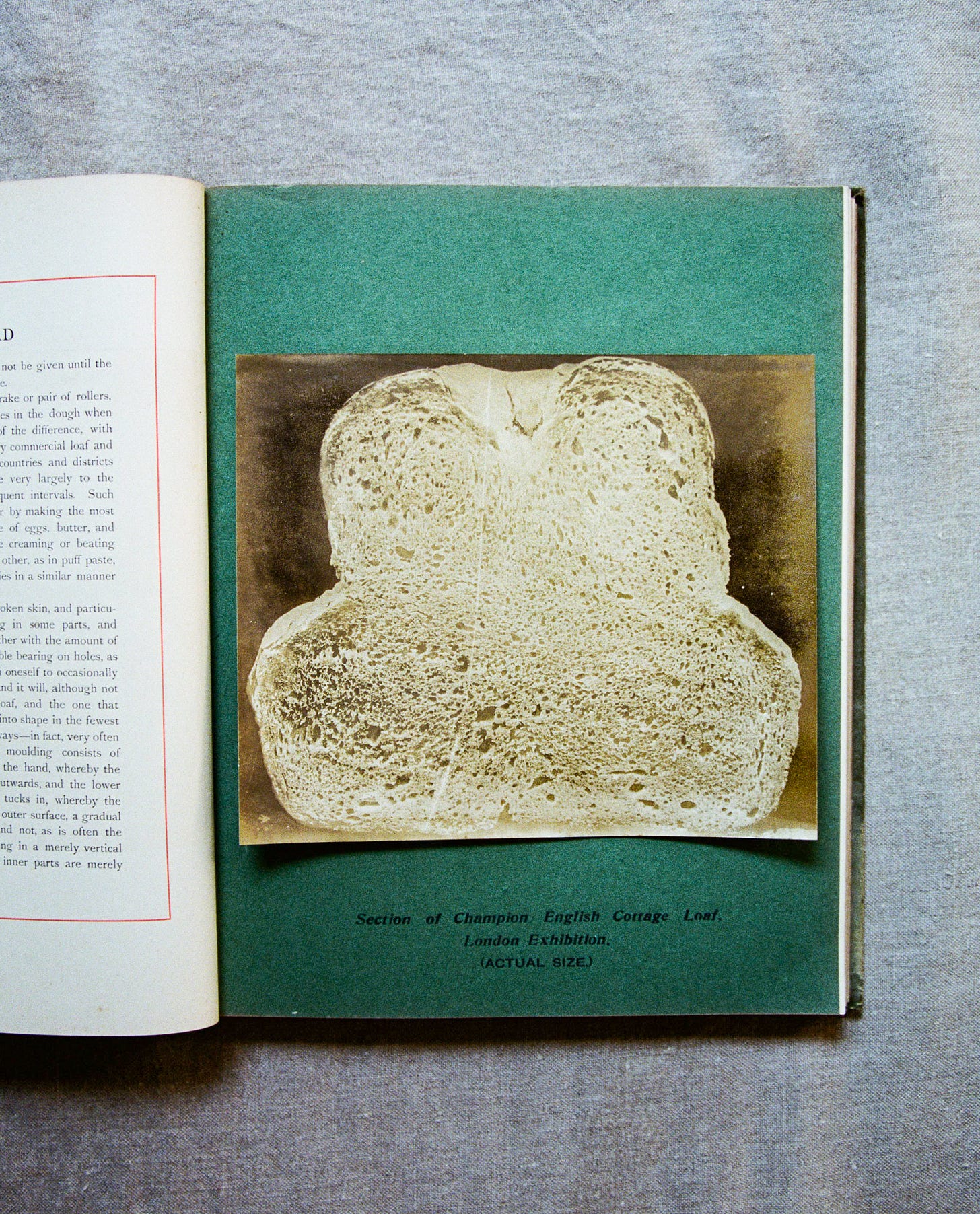
Simmons even produced 350 copies of a “deluxe,” Morocco leather-bound edition of The Book of Bread in 1902, in which all of the black-and-white photographs were silver bromide prints. This edition is so rare that until recently I'd never seen a single copy for sale; two now appear to be available from online booksellers, for about $5000 each. (The inclusion of two bromide prints in the trade edition is a welcome, if somewhat random, choice.)
The color images in The Book of Bread are chromolithographs, made using a painstaking process that reproduces colorized images from a single black-and-white negative. Since no color information is contained in the negative, the color is added in successive layers during printing, with the printer relying on notes from the photographer to best approximate them. Many of the loaves in the color images are set against a glowing lapis-blue background, lending them a surreal, aloft-in-the-sky quality.
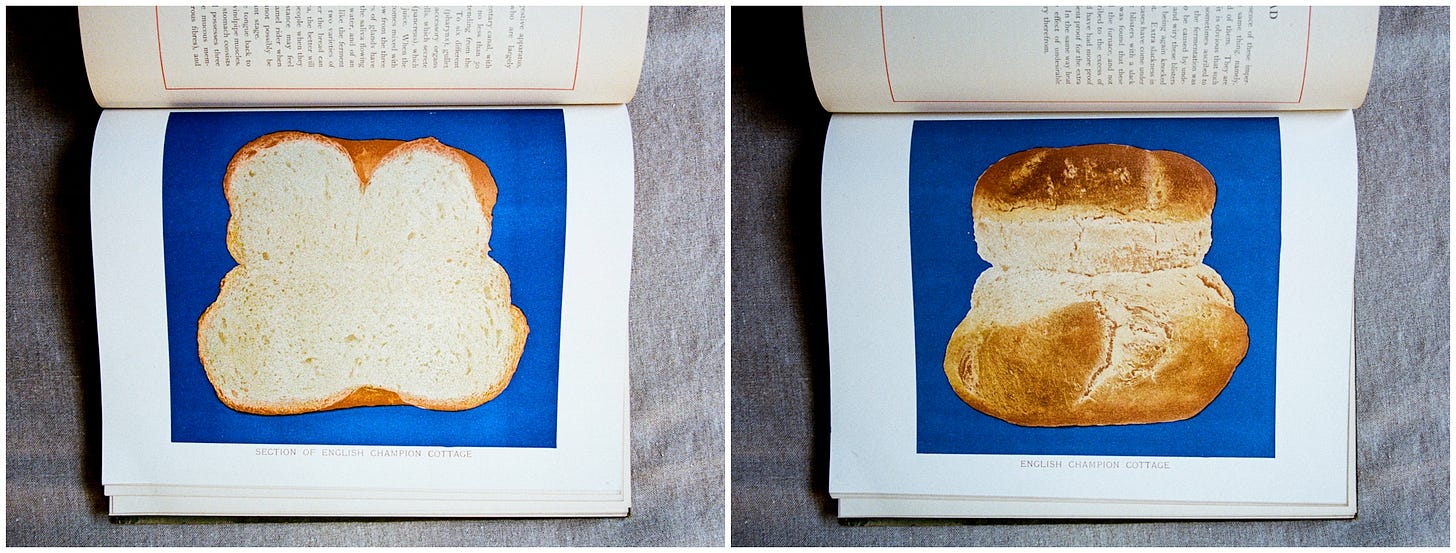
In the book’s introduction, Simmons writes, “The loaves are now reproduced photographically correct, of exactly full size, and the colours are as nearly perfect as it is possible for them to be by any process at present known.” He also mentions the lengthy and costly photographic testing that was needed in order to get the images just right. For Simmons, the most important criteria were reproducing the “whiteness of the crumb” and being able to show the loaves full-size, so that bakers could accurately compare their own breads to what the book presents as the industry standard of the day.
Nowadays beautiful, lifelike photographs of breads are mandatory in baking books, so it’s easy to overlook how much of a revelation the images in The Book of Bread would have been to readers of the time. The photography in bread baking books of the 21st century tends to be—like that in most other categories of cookbooks—glossy, gorgeously lit, and heavily styled. (This is a fairly recent trend—not that long ago, most bread books lacked photographs altogether.) Compared to that of today’s bread guidebooks, The Book of Bread’s imagery is stark and clinical in presentation, making it more of a typology, or a field guide to breads. It might seem somewhat alien to modern eyes, but as a practical comparison of one bread to another, it would have been highly instructive to a reader of the time.
Sadly, despite Simmons’ self-congratulatory crowing about the quality of the photographs (and the effort required to get them there), he makes no mention in the book whatsoever of the photographer who created them, and his or her name remains lost to history. It’s hard to imagine said photographer not being miffed to go uncredited in the book, especially given the obvious effort and skill that went into the producing the imagery.
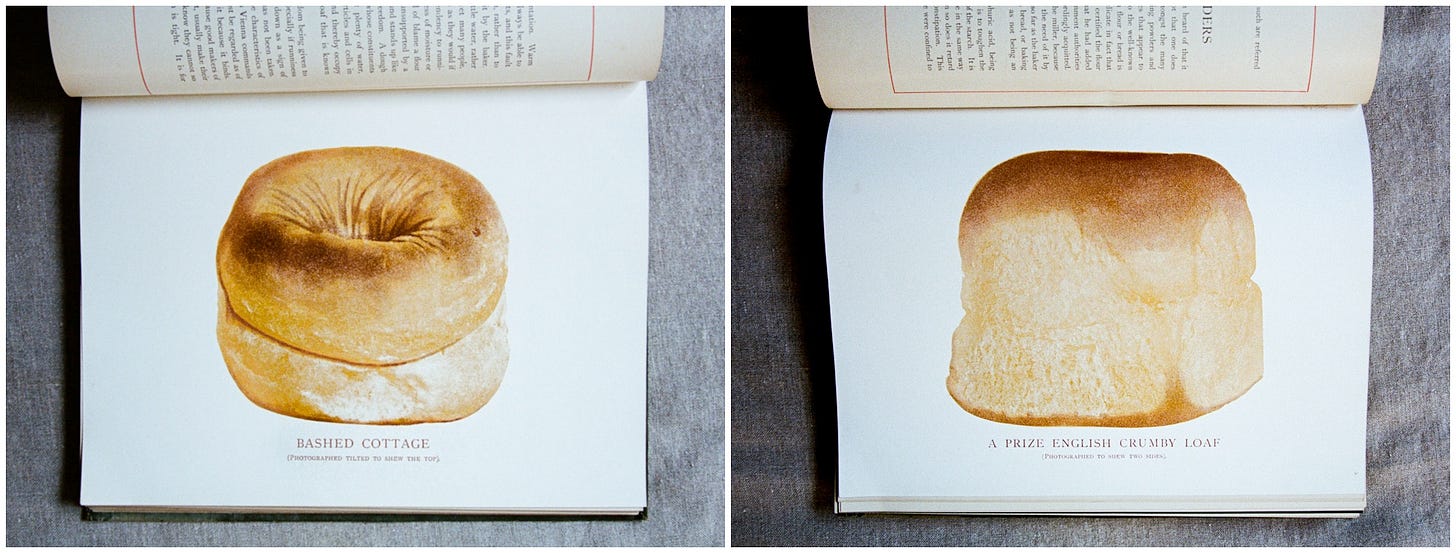
As for the text in The Book of Bread, it is rather comprehensive. There are sections covering all aspects of the bread-baking process, including a detailed look at the ingredients of the day and a lengthy chapter on what goes into a well-crafted loaf (and what poorly-crafted ones lack), in addition to sections on baking methods, machinery and ovens, and fermentation. There is even a short section at the end of the book on home baking, though Simmons is—unsurprisingly—mostly dismissive of the breads produced by the home bakers of his day.
For a book that is more than 100 years old, much of Simmons’s bread technique sounds surprisingly modern. For example, there is a section on the virtues of using scalded flour in breads for increased tenderness and keeping qualities, a technique recently repopularized as the “tangzhong” or “yudane” method by Taiwan-based author Yvonne Chen in her book 65° C. In this technique, a portion of the flour and water in a bread dough are heated together—i.e., scalded—before the dough is mixed, which allows the baker to increase the amount of water in a bread significantly without making the dough itself wetter.
Elsewhere in his book, Simmons writes, “The best flavoured flour, all other things equal, is the one that is freshest milled,” echoing the bread world’s current renewed interest in the flavor that can be coaxed from wheat and other grains when they are used straight from the mill. What’s old is new again.
While the bread baking information in The Book of Bread is definitely worth a download of the PDF, the photographs are what make this book a treasure, and a reason to seek out an original copy. As Martin Parr writes:
The nineteenth-century photobook was primarily an archive in which the things of the world were stored and catalogued. Here, at the beginning of the twentieth century, one of the humblest, yet most essential of objects is catalogued as precisely, rigorously as any work by a 1980’s Conceptual artist.
I don’t know a whole lot about 1980’s Conceptual art, but I know bread, and I’m grateful that Simmons left us this wonderful snapshot of what bread baking was in his day.
—Andrew
wordloaf Newsletter
Join the newsletter to receive the latest updates in your inbox.
